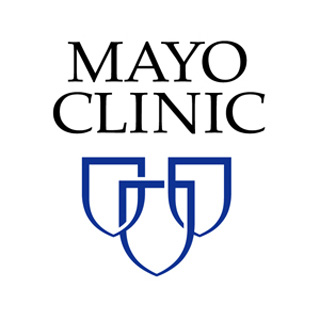Transforming Non-Invasive Liver Disease Detection by MRE: The Hepatogram
| Status: | Recruiting |
|---|---|
| Conditions: | Obesity Weight Loss, Gastrointestinal, Gastrointestinal |
| Therapuetic Areas: | Endocrinology, Gastroenterology |
| Healthy: | No |
| Age Range: | 18 - Any |
| Updated: | 10/20/2018 |
| Start Date: | September 2015 |
| End Date: | December 2019 |
| Contact: | Suzanne M Greiner |
| Email: | greiner2.suzanne@mayo.edu |
| Phone: | 507-284-5010 |
A variety of liver insults lead to pathological changes in liver architecture that culminate
in cirrhosis. While invasive liver biopsy was required to detect cirrhosis, the development
of magnetic resonance elastography (MRE) has revolutionized our ability to detect liver
fibrosis through non-invasive means that involve measurement of liver stiffness. However, a
number of pathological findings occur in liver in response to various insults that precede
cirrhosis and are clinically important to identify such as steatosis associated with NASH,
inflammation associated with viral hepatitis, and congestion associated with cardiac
hepatopathy. Detection of such entities provides essential diagnostic, prognostic, and
treatment information but yet is not available non-invasively. Recent murine studies from
this group of investigators has identified that MRE technology can be adapted to
non-invasively detect these conditions. Implementing this into the practice will transform it
by obviating the need for invasive liver biopsies in patients suspected of having such forms
of suspected liver disease. This will differentiate Mayo from other institutions where such
technology is not available.
An additional aim of this study is to examine the impact of obstructive sleep apnea (OSA) on
the pathogenesis of nonalcoholic fatty liver disease (NAFLD), both common comorbidities of
obesity. Recent evidence indicates a potential link between OSA and severity of NASH and
fibrosis, but the mechanisms of OSA- associated hypoxia on liver disease progression in NAFLD
is unclear. This study offers the unique opportunity to analyze this association, as the
study population will undergo routine evaluation for OSA, as part as the preoperative work-up
prior to bariatric surgery.
in cirrhosis. While invasive liver biopsy was required to detect cirrhosis, the development
of magnetic resonance elastography (MRE) has revolutionized our ability to detect liver
fibrosis through non-invasive means that involve measurement of liver stiffness. However, a
number of pathological findings occur in liver in response to various insults that precede
cirrhosis and are clinically important to identify such as steatosis associated with NASH,
inflammation associated with viral hepatitis, and congestion associated with cardiac
hepatopathy. Detection of such entities provides essential diagnostic, prognostic, and
treatment information but yet is not available non-invasively. Recent murine studies from
this group of investigators has identified that MRE technology can be adapted to
non-invasively detect these conditions. Implementing this into the practice will transform it
by obviating the need for invasive liver biopsies in patients suspected of having such forms
of suspected liver disease. This will differentiate Mayo from other institutions where such
technology is not available.
An additional aim of this study is to examine the impact of obstructive sleep apnea (OSA) on
the pathogenesis of nonalcoholic fatty liver disease (NAFLD), both common comorbidities of
obesity. Recent evidence indicates a potential link between OSA and severity of NASH and
fibrosis, but the mechanisms of OSA- associated hypoxia on liver disease progression in NAFLD
is unclear. This study offers the unique opportunity to analyze this association, as the
study population will undergo routine evaluation for OSA, as part as the preoperative work-up
prior to bariatric surgery.
INCLUSION CRITERIA
1. Age ≥ 18 years
2. Verbal and written fluency of the English Language
3. Able to consent
EXCLUSION CRITERIA
1. Absolute contraindications to MRI including pacemaker, automatic implantable
cardioverter/defibrillator (AICD) device, cochlear implant, ventriculoperitoneal (VP)
shunt, aneurysm clip, deep brain stimulator, and severe claustrophobia
2. Absolute contraindications to liver biopsy including coagulopathy
3. History of decompensated cirrhosis complicated by one or more of the following:
esophageal variceal hemorrhage, ascites, hepatic encephalopathy, or spontaneous
bacterial peritonitis.
4. Women who are pregnant or breastfeeding
5. History of liver transplantation or hepatic resection
6. History of primary or secondary hepatic malignancy
7. Current or previous excessive alcohol consumption within 6 months of study enrollment
defined as > 30 grams/day for men and > 20 grams/day for women
8. Current or prior history of therapy for underlying liver disease including
interferon-based medications, other antiviral agents, immunomodulatory therapy,
biologic response modifier therapy, and complementary/alternative medications
including (but not encompassing) milk thistle
9. Any severe medical condition that, in the opinion of the Principal Investigator, would
serve as an exclusion criterion for study enrollment
We found this trial at
1
site
Mayo Clinic Rochester Mayo Clinic is a nonprofit worldwide leader in medical care, research and...
Click here to add this to my saved trials
